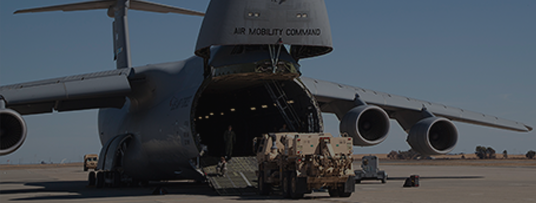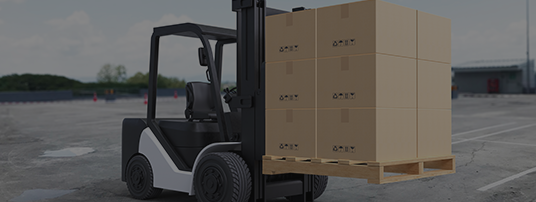In the world of aviation, achieving aerodynamic balance is not just about brute force or large-scale control inputs, it is about precision. While primary flight control surfaces like elevators, rudders, and ailerons handle major directional changes, maintaining smooth and stable flight over time requires far more subtle adjustments. This is where trim tabs come in, this blog serving to explore what trim tabs are, how they function, and why they are indispensable in achieving finely tuned, efficient, and fatigue-free flight.
Trim tabs are small, adjustable surfaces attached to the trailing edges of primary control surfaces like elevators, ailerons, and rudders. Though modest in size, their aerodynamic impact when used is significant. By altering the airflow over the main control surface they are a part of, a trim tab generates a counter-force that adjusts the neutral or resting position of the larger surface.
The basic principle behind a trim tab is aerodynamic leverage. When a pilot adjusts a trim tab, either manually via cockpit controls or automatically through a servo system, it changes the aerodynamic load on the parent control surface. This change results in a new equilibrium point, which the aircraft naturally stabilizes around.
For example, if an aircraft tends to pitch nose-up during cruise conditions, the elevator trim tab can be adjusted downward. This will cause the elevator itself to deflect slightly upward without pilot input, applying a downward force on the tail and counteracting the nose-up tendency. The result will be level flight without the need for continuous manual correction.
Controlled directly by the pilot using trim wheels, levers, or electric switches in the cockpit, manual trim tabs are commonly found in general aviation and older aircraft. Generally speaking, they offer straightforward mechanical simplicity.
These tabs move on the main control surface in response to pilot input, providing aerodynamic assistance by deflecting in the opposite direction. This reduces the physical control force needed to move a surface, an advantage that is especially useful on large or fast aircraft.
Used primarily with stabilators, anti-servo tabs move in the same direction as the main surface to increase control sensitivity and feedback. This prevents over-controlling and improves stability.
Spring trim systems are not actual tabs, but internal systems that use adjustable springs to create artificial centering forces. They are often found in aircraft lacking dedicated trim surfaces, being popular in helicopters and light aircraft.
Without trim tabs, pilots would need to maintain constant pressure control, especially when an aircraft is out of natural balance due to shifting weight or flight conditions. Trim systems provide resolution to this by enabling hands-off, stable flight for long periods, which is essential for both comfort and safety.
Constant control inputs create drag, which is undesirable for optimal flight. When an aircraft is properly trimmed, it flies in a more aerodynamically neutral configuration, minimizing resistance and fuel consumption, particularly on long-haul routes.
When cargo or fuel distribution is uneven, or in the event of an engine-out scenario on multi-engine aircraft, trim tabs allow a pilot to counteract roll or yaw without making continuous manual corrections.
In high-performance and aerobatic aircraft, precise trim adjustments enable fine control over every phase of flight, whether one is carrying out a gentle cruise, a steep climb, or a coordinated turn.
Ensure that all trim tabs move freely through their full range of motion and that any hinges show no signs of binding, corrosion, or mechanical wear.
The connecting linkages of trim tabs must be correctly aligned and secure. Confirm that all trim tabs deflect to manufacturer-specified angles to maintain proper aerodynamic balance.
In cable-operated or manually controlled systems, inspect cables for tension, fraying, or slack. Inconsistent tension can lead to sluggish or delayed trim response.
For electrically actuated trim systems, test the motor, switches, and wiring for responsiveness, as well as look out for any signs of overheating, delay, or failure. Servo-driven systems should also be checked for signal accuracy and mechanical responsiveness.
Periodic calibration is essential, especially after any repairs or adjustments are made to the trim system. Flight control checks should also confirm that neutral positions and movement ranges meet operational specifications.
For premium trim tab components or any other part type of interest, trust Broadline NSN to meet your purchasing needs. Owned and operated by ASAP Semiconductor, an AS9120B, ISO 9001:2015, and FAA AC 00-56B accredited distributor, our portal features a collection of more than 2 billion part listings that are sourced from trustworthy manufacturers and suppliers. To get started with us, just fill out a Request for Quote (RFQ) form online with information on your requirements. Once we receive your submission and review your provided details, one of our representatives will connect with you within 15 minutes to provide timely fulfillment options.

 The only independent
The only independent



“We Proudly Support Intrepid Fallen Heroes Fund that serves United States Military Personal experiencing the Invisible Wounds of War : Traumatic Brain Injury (TBI) and Post Traumatic Stress (PTS). Please visit website (www.fallenheroesfund.org) and help in their valiant effort”.
If You’re Ever Looking for NSN parts Or Have an Aircraft On Ground Situation, Don’t forget That We offer Competitive Pricing and Guaranteed On-Time Delivery.
Request for Quote